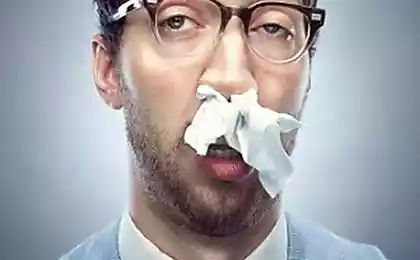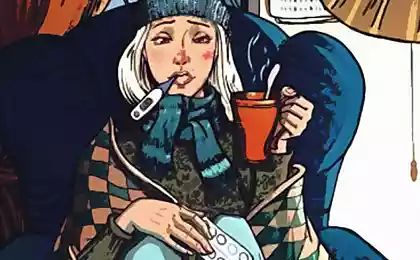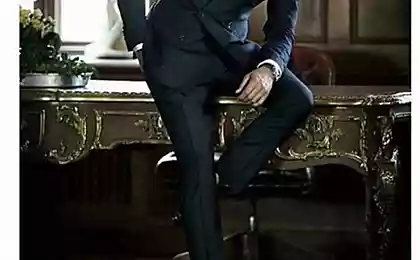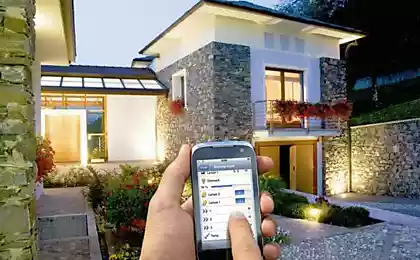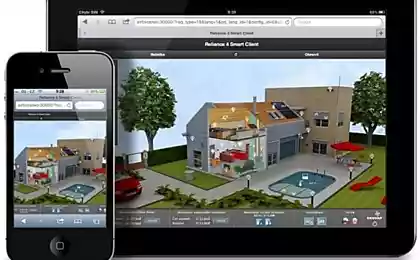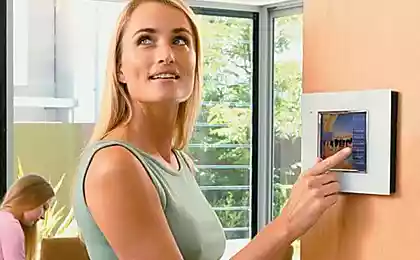924
Smart home in Russian: comfort vs energy efficiency
By 2020, every fifth house in Europe and every third in the United States will become "smart". The construction Ministry estimates the domestic market for intelligent buildings in the 7-10 billion by 2017. According to some estimates, only 5% of housing in Moscow and 2% in Russia can be called intelligent. Experts note that the barrier for market development was the high cost of the systems "smart house". Besides the possible savings at low rates for resources, and as a result the yield of such decisions in Russia is questionable, unlike Europe, where green technology has led to higher prices for resources. Therefore, the domestic consumer chooses intelligent housing for more comfort.
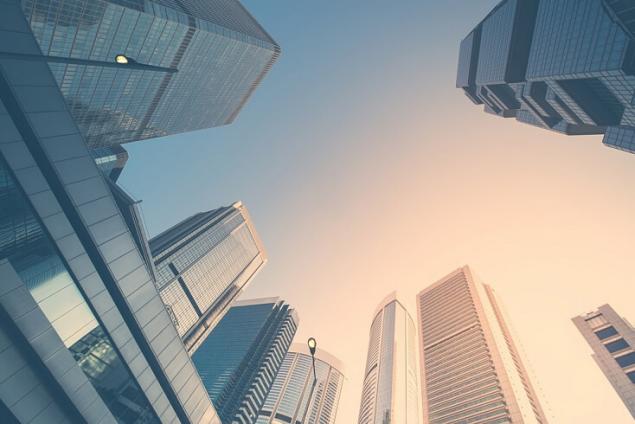
Housing in the West is rapidly getting smarter
Research company All! in its January report said that about 90% of the total number of smart homes in the world located in Western Europe and North America. The total number of smart homes in these regions in 2015 amounted to 17.9 million, the report by Berg Insight.
The number of smart homes in the US and Europe, 2014-2020, mln
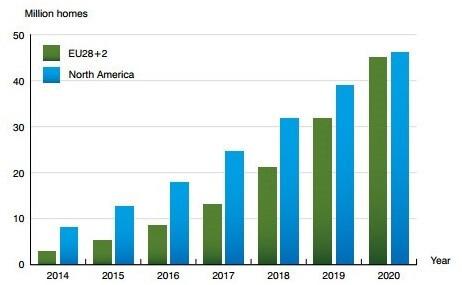
At the end of 2015 the number of smart homes in Europe was estimated at 5.3 million By 2020 20% or 44.9 million households in Europe will be by this time an intellectual one. In North America by the end of 2015, the subscriber base of "smart" houses amounted to 12.7 million which Is 56% higher than a year earlier. By 2020, 35% of all households, or 46.2 million North America will be "smart".
ABI analysts estimate that in the field of "smart" homes by 2020 most of the revenue the market will bear selling equipment. While the revenue of enterprises from sales of equipment for the construction of systems of "smart" house will triple. The appearance of "box" solutions that the user is able to install itself, can only hurt the market, depriving the service company income.
Comparison of volumes of the market of smart home and security, billion rubles
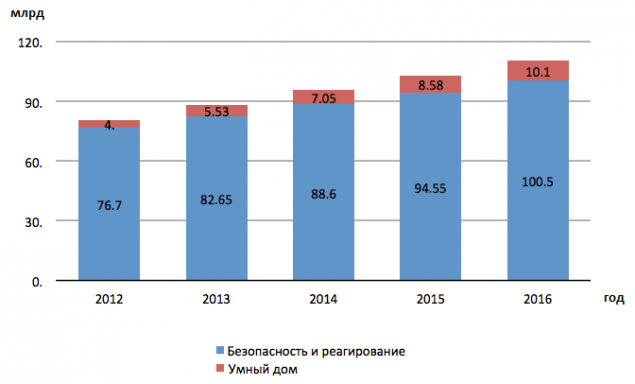
In Russia, according to estimates of Michael I, the head of the Ministry of the Russian Federation, segment of the market of "smart" homes in 2013 volume reached 3.7 billion rubles, and by 2017 will grow to 7-10 billion. Company Direct Info has estimated that the total domestic market of systems of "smart home" at the end of 2014 to 86 million euros. This amount does not include mark-UPS of equipment suppliers and installation.
Customer solutions for the "smart home" in Russia, as a rule, the owners of cottages and private houses. Now they are connected and the apartment owners.
The main elements of the smart home
The term "Smart home" is used only in Russia. It implies two separate concepts: automation personal homes (smart home, home automation) and automation of a residential building (smart house, building automation). As the word "house" in Russian means both an apartment and an apartment building, and private low-rise household, under the General term "smart home" refers to all three types of automation.
The concept of smart home and building automation in Europe and the United States also can vary greatly and involve the automation of one apartment and the whole apartment housing.
The most popular components of the smart building system, studies show, have become smart thermostats, security systems, smart light bulbs, network cameras, audio systems covering multiple areas at once. The largest share of supply in the market under consideration is a Lighting company Philips, Honeywell, Belkin, Nest, Ecobee, MyFox, Sonos, Canary, Netatmo and D-Link, according to analysts Berg Insight.
Usually the control center of a complex system of "smart home" is a unified center of information processing and management. This device is a main module connected to the sensors all devices.
For the management of modern systems of intellectual household uses the technology of mobile or fixed network (fiber to the apartment). The control center is connected to the Internet and to the cloud service provider's equipment or service provider "smart" house. This solution allows to simplify the use of the software and interaction with "smart" home. In a special application or using the web-interface can control all system parameters: enabled or disabled the device, specified performance and desired settings. For example, on a hot day in the office can set the time and desired temperature for the thermostat to return to work already at home feel more comfortable.
Users in Europe, mostly popular solution, capable of uniting all the "smart" devices into a single network. A new degree of comfort and reduction of operational costs of housing – the main reasons Europe acquired the "smart" home.
"Under the concept "smart home" I would consider a system that improves the user experience for those who lives in this house and this system is used. It could be system optimization of expenses, in which residents pay less for utilities," explains Andrew Belousov, head of it outsourcing GK "KORUS Consulting".
The main user requirements for automation systems — reliability, installation time and cost. Depending on the object the priority of the requirements is changing, says Sergey Pirogov, the head of the project "Smart home INWION".
"With the installation of automation systems in the apartments installers are often faced with a ready repair, so the question of "ease" of installation and the exterior design of the various sensors becomes important. In such cases, customers prefer wireless solutions, which allows not to touch the existing renovation," he said.
Dmitry Kurowski, partner development company "Khimki Groups":
In our country there is no clear understanding of the whole complex of functions "Smart home", so this epithet is awarded to the house with just a good split-system, multimedia equipment and video surveillance system throughout the perimeter. However, this "smart" home should have a whole range of modern technical possibilities, and the main difference from the house, just equipped with different technical innovations and "life support" system is the ability to control all systems for the given parameters, that is, "to think."
In practice, the intelligence of the house can be both active and passive from the point of view of environmental friendliness and resource consumption for heating and life support. Passive intelligence is designed to save existing resources. Active – search and release of additional resources for heating, for example, garage, Conservatory, utility.block.
That includes the concept of "smart home"?
Security inside the house. These include the engineering protection from fires, leaks, short circuits and shocks. An intelligent system, depending on the specified options and their capabilities can report the problem to the owner, and independently to resolve it. The sprinkler system turns on, responding to smoke in a certain place of the house.
The perimeter defense. Modern "smart home" able to defend itself not only passively, by means of video surveillance, alarm systems, but also actively send a signal to the guards, the owner, to include a system alert sound, even to turn on the light and imitate a dog barking – creating the effect of presence of owners.
A light control. This is one of the most common and the most fashionable functions of "smart home". The host can set their own lighting scenes for different rooms, soft lighting hallways at night, lighting certain areas of the yard and garden, a "party" in the REC room or living room mode "cleaning" is the maximum lighting in the desired room. Motion sensors, light intensity time (for example, lights on the porch burn themselves in 19 hours in summer and 16 hours in the winter) and many more.
The multimedia control. Another newfangled trend for fans of "smart homes". All TV panel, home theater systems connected to the Internet, to your home audio and video-bibioteca– this is no surprise. But the time management view (e.g., televisions and /or computers in the house cannot be enabled on weekdays from 12 to 18 hours) particularly true if the house has children who are difficult to detach from computer games or movies (especially if parents aren't home).
Climate control is one of the most common and long used features "smart home" system responds to the outside temperature, more rapidly heats the bedrooms of the winter night, actively ventilate the kitchen, in the evenings or in the morning – gym, swimming pool etc. Some systems are able to ventilate the room, open or close Windows, close curtains or lower blinds.
Management: a few years ago, smart homes were controlled using the keypad or touch-panel. Now, in the era of smartphones and tablet computers more and more manufacturers and programmers of systems of "smart house" provides the ability to control from iPhone, iPad or other device via the Internet. The owner of smart home do not need to constantly monitor the "behavior" house. It is the user who sets the parameters and runs a smart system for a given master program.
Remote control – this is probably one of the most popular trends in the market of smart home control. And thanks to the ubiquitous Internet, to manage the building and monitor security you can even from the other hemisphere. For example, you can take a tour around the house while on vacation, or to turn on the oven, sauna, heated pool leaving from work in the evening.
Intelligent housing-generation Y
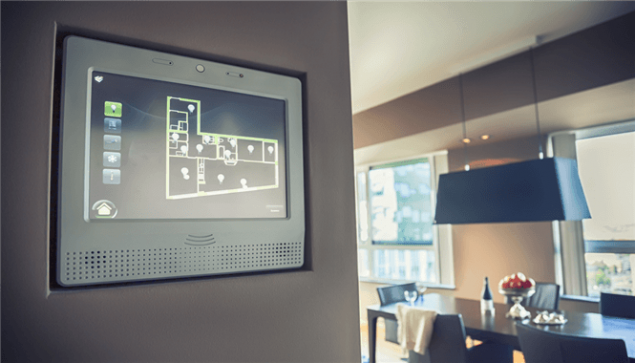
Segment, which are interesting solutions for "smart home", experts estimate differently. The demand for automation in small and medium — sized segments in apartments, cottages and garages — not yet developed. However, before automation was available only to premium-class homes, and now the baseline solution available on the market and for people with an average income slightly above average.
"For Russia a potential market for home automation is the age group from 25 to 57 — 60 years with income above 45 — 50 thousand. According to statistics, the size of the audience — some 70 million people. In the near future we will witness the rapid growth of automation in the mass segment", — says Sergey Pirogov.
Grigory Sizov, head of the M2M business of VimpelCom, believes that the Millennials (born after 1981), or, as call them, generation-Y are much more receptive to innovation, mobile apps and digital revolution. Therefore, the young and the digital "geeks" are willing to pay for such solutions.
"In General, any project of "smart home" should carry additional value to the client, rather than remain a beautiful name. Then the demand will meet the supply and consumers of such services will be more. For example, currently, a huge percentage of consumers home alarm systems are those who have experienced a burglary. And, of course, the greatest penetration of such services are concentrated in cities with high levels of such crimes", — says Grigory Sizov.
Tasks of energy saving in Russia is secondary, in contrast to Europe, said Sergei Pies. According to him, the energy in the Old world are often based on green technologies, which ultimately leads to their high cost. Savings in Europe – the main advantage, which gives the "smart" housing.
The appearance of "smart" high-rise buildings
In Russia the projects of multi-storey intelligent buildings implementing several developers. So, the main architect of the project "Faces" on the Khodynka field in Moscow from Capital Group was the idea of creating the complex obschedomovoy seamless network based on WI-FI. For this we developed software that combines the technological potential of wireless connectivity in a single, flexible and intelligent system.
"Among the opportunities of the future home – contactless access in the lobby at home, intelligent recognition system, entering cars, virtual Concierge, the remote control guest access, elevators with voice control and entertainment content, yard wi-fi-theater, great contact with the management company, and more", — says Alexei Belousov, commercial Director Capital Group.
In the "Faces" project the developer is betting on technology and innovation, which will improve the standard of living of the residents. The company estimate the cost of operating the system in 1.5-2 thousand rubles. per month. This amount includes the package of digital television (500 rubles) and unlimited high speed Internet (500 rubles).
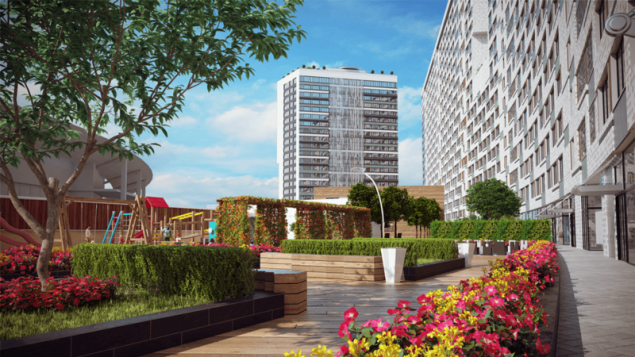
"The market has developed a common belief that we implement the concept of smart homes. I'm ready to call our project an anti-"smart" house, as it does not provide such basic items as the monitoring of energy efficiency, monitoring resource consumption, etc. of Course, our house will address issues of energy efficiency, but it's not his primary function," — says Aleksey Belousov.
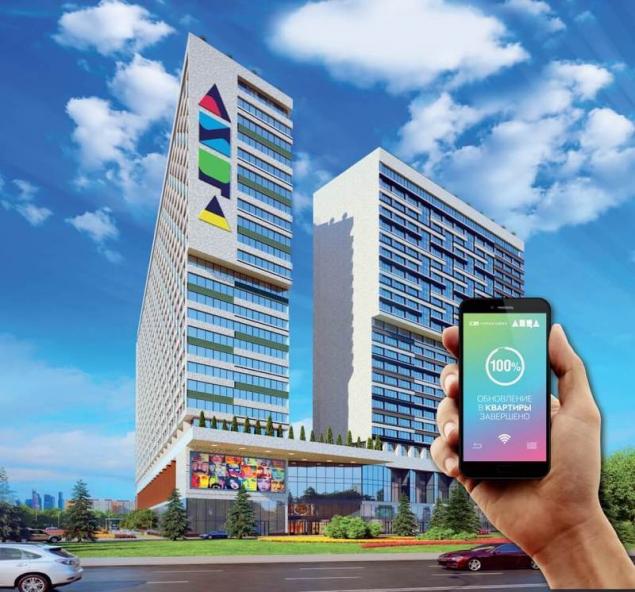
He noted that reduce the cost of electricity can be achieved through the installation of LED lamps with motion sensor, the issue of leakage is resolved and "Neptune". Such devices are minimal money, so the need to install systems smart building for energy saving in the apartment becomes impractical.

In the residential complex "Novaya Okhta", which is based in St. Petersburg, apartments are designed for people who evaluate the technical possibilities for the provision of various services. This and climate management, and insurance against leaks, presence, monitoring the health status of older people, etc. Housing designed for the middle class. Demand for smart homes in the company evaluate the degree of confidence to the technique, desired comfort level and willingness to pay for it.
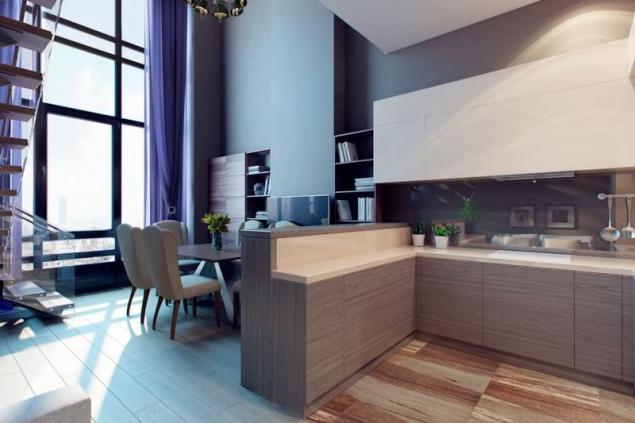
"Installation of various electronic systems, which is the intelligence that helps in everyday life to buyers of apartments, assumes a specialized company. Therefore, the cost of construction, and the sale price of apartments from a system of "smart" house, not increased. Operating costs may increase depending on what the services will benefit the tenant," explains Julia Ruzhitsky, regional Director of sales of real estate "of LSR Group" in the North-West of Russia.

According to the representative of the company, supplied equipment class mass-market "smart home" kind of experiment. With it, the developer plans to find out if buyer pay for additional services and a new degree of comfort.
The smarter, the more expensive
The cost of solutions vary considerably depending on the components, living space and functionality. Experts differ in their estimates of the cost of the basic configuration cost solutions for smart homes.
For example, Sergei Stepashin, Chairman of the Supervisory Board of state Corporation "Fund of assistance to reforming housing and communal services" estimated that the difference in the cost of construction of conventional and energy efficient houses of the same area with the use of domestic materials is only 5%. Now the Ministry of construction and the Ministry of energy is preparing a bill that introduces stringent requirements for new buildings without systems of resource conservation.
The use of "smart" engineering systems increases the cost of one square meter of housing by approximately 30-40%. The final cost of the object is reflected at 20% and above, estimated Alexei Krasov, head of the engineering division of the Directorate for integrated security of the group "Asteros". He notes that "smart" homes marketed residential real estate as luxury housing, so the price is too high and may be of the order of 20% to the market value of the property.
"For example, if we consider the 2-room apartment in Moscow at an estimated price of 10 million roubles, the overpayment for the presence of "smart" solutions can reach 2 million rubles. Given that through the use of smart technology to save on energy is of the order 20-30%, with a monthly rent 10 thousand with the help of automation systems of microclimate and "smart" ingeneri you can save up to 2 thousand rubles. That is, the return on investment will happen only after 1000 months (83 years old)", — said Alexei Krasov.
According to experts, this payback period is too long, and the economic feasibility is the big question. On the other hand, "smart" houses provide comfortable accommodation.
To automate the cottage or a two-bedroom apartment almost completely with the help of "Smart home INWION" possible 120 — 180 thousand rubles. Basic kits for the automation start from 45-60 thousand rubles, calculated Sergey Pirogov. He explained that users perceive the video surveillance system with smart sensors is much easier than solutions for smart homes. So, "smart" house with customers associated with luxury and comfort, so the company is promoting market solutions for intelligent video surveillance systems with a set of sensors.
"The functionality of video surveillance systems in the end can increase the alert about the smoke, automation, led lighting, etc. In fact now promoting a single controller with two systems on Board," he explains.
"You can automate everything from ventilation or heating and ending with the inclusion of music in a room depending on movement. Because of the high cost of decisions, even developers with the name while skeptical about the concept of "smart" houses", — says Andrey Meluzov.
He notes that the meaning of implementation is, when the payback period from one to two years or if the landlord plans to surprise guests and neighbors.
"Some tenants do not think about the timing of return of investment because you want to surprise your guests and neighbors. Besides, payback is not always easy to calculate. For music системыFollow me in which music can be played in different places in the house depending on your travels, it is very difficult to capture the benefit. Such functions are also associated more with the image and know-how than material gain," he explains.
The construction of "smart" high-rise will accelerate the laws
Growth drivers the market of multi-storey intelligent buildings will be the rising cost of energy and legislative initiative by which the government will give preference to developers, implementing "green" and energy efficient technologies, experts say.
"Now in the building codes and Standards spelled out minimum requirements for energy efficiency in buildings. The tightening of these requirements and rising energy costs will give a serious impetus to the development of the market of "smart" buildings in Russia", — said Alexei Krasov.
In many European countries for builders who use green technologies in the construction and operation of facilities, the state applies the tax benefits, it helps to minimize the costs for supply of equipment and resources. So, in Italy the cost of electricity for buildings certified by a high energy class (A-class), reduced in two times.
In Russia the emergence of such initiatives, one should expect revival of the market, Alexey Krasov.
"The cost of energy in Europe is much higher than ours, so return objects with the use of "green" technologies there is much faster", — he said.
Promote the technology for "smart" houses will be and the operators. So, after covering cities in the broadband fixed and mobile Internet access providers will seek new growth points. According to Sergey Pirogov, solutions for the "smart home" can become one of such points.
"The task of automation will be examined in depth, and the end user will offer a gradual introduction of the required functionality, and not to burden him from a costly installation. Such solutions will offer a "smart" building as a service", — says Sergey Pies.
Barriers to construction of "smart" homes, Experts note that developers are in Russia focus on housing in the mass segment. Lack of technology for "smart" house in an affordable price range on the market and low solvency of the population leads to the fact that intelligent solutions are still perceived by buyers as items of luxury. This leads to the fact that the project is "smart" apartment buildings in Russia is very small.
As the market solutions for the Internet of things, including which includes various sensors for "smart" house, being formed, then there are issues with uniform standards, which would allow you to connect all components into a single network, says Grigory Sizov.
Well as suppliers of systems for smart homes are often unable to offer practical solutions developers. "The main obstacle here is the limitation of technology, not yet sufficiently networking for the penetration of the Internet of things, not enough sensors, not all of the standards agreed between them. However, the visible trend towards the popularization of the Internet of things, for example, the cost of equipment is reduced," — said Andrei Belousov.
In addition, the management companies do not always have the resources to operate the system of "smart" houses, and the tenants because of the low cost resources, are not interested in investing in solutions for energy efficiency and do not see the benefits in the installation of such decisions.
Another barrier is the Director of marketing and business development PJSC MGTS Dmitry Kulakovsky calls the complexity of the "last meter" of networks, which are very important for quality of Telecom services, "smart home". Now the company is betting on a "boxed" solution, as the lack of accessible and understandable models may alienate the user from the deployment of elements of "smart home".
Smart home" as a point of growth in the telecommunications market
Operators have different opinions of the market potential. Thus, according to estimates of VimpelCom in Russia more than 50 million households. When the penetration of the technology 10% created a huge market. Seriously change the dynamics of the revenues of the telecommunications market in the next 2-3 years solutions for "smart home" is unlikely, says Grigory Sizov.
According to estimates MGTS, the market of "smart homes" is a maximum of 5% on the Moscow real estate market and about 2% of the housing market in Russia. In the company of such a low penetration is associated with high cost solutions and the need to complete the conversion of a house or apartment. The cheapening and simplification solutions for smart homes will expand the addressable market to 55% -60% of all households in Russia. Currently on the market, the company plans to increase the penetration of these technologies in 4-6 times in the next five years.
"We believe that these technologies can become an additional driver for the growth of the telecommunications market of Russia only if you use a service model of providing services. MGTS is one of the first in the domestic market, who used to promote the services of the "smart home" that's the operator, not the installation model. This business model will help operators not only stay afloat, but also give a second wind" — says the Director of marketing and business development PJSC MGTS Dmitry Kulakovsky.
The advantage of Internet service providers is in constant contact with the client, which is difficult to reach vendors or suppliers. As international experience shows, mass technology "smart home" will be only in the application of the operator model, said the representative of MGTS.
According to research, MGTS, in Russia, popular security solutions. Therefore, the company proposed production solution services for security alarm and video cloud.
"Service is particularly popular with parents who want to monitor their children and nannies; people with elderly relatives, and even fun to record your pet with the subsequent installation of video recordings cloud-based video archive," — said Dmitry Kulakovsky.
This year MGTS plans to launch pilot projects in telemetry meters monitoring water, light and electricity. Control automation utilities company considers a promising direction.
In "Vympelcom" do not disclose their plans to enter the market of systems of "smart home", explaining that watching the development of the market.
"Security systems, which include and solutions for "smart" homes, according to our forecasts, in the next 5-7 years will be in the top 3 areas of Internet of things, along with industrial solutions and systems for vehicles", — said Grigory Sizov. published
P. S. And remember, only by changing their consumption — together we change the world! ©
Source: iot.ru/gorodskaya-sreda/umnyy-dom-po-russki-komfort-protiv-energoeffektivnosti

Housing in the West is rapidly getting smarter
Research company All! in its January report said that about 90% of the total number of smart homes in the world located in Western Europe and North America. The total number of smart homes in these regions in 2015 amounted to 17.9 million, the report by Berg Insight.
The number of smart homes in the US and Europe, 2014-2020, mln

At the end of 2015 the number of smart homes in Europe was estimated at 5.3 million By 2020 20% or 44.9 million households in Europe will be by this time an intellectual one. In North America by the end of 2015, the subscriber base of "smart" houses amounted to 12.7 million which Is 56% higher than a year earlier. By 2020, 35% of all households, or 46.2 million North America will be "smart".
ABI analysts estimate that in the field of "smart" homes by 2020 most of the revenue the market will bear selling equipment. While the revenue of enterprises from sales of equipment for the construction of systems of "smart" house will triple. The appearance of "box" solutions that the user is able to install itself, can only hurt the market, depriving the service company income.
Comparison of volumes of the market of smart home and security, billion rubles

In Russia, according to estimates of Michael I, the head of the Ministry of the Russian Federation, segment of the market of "smart" homes in 2013 volume reached 3.7 billion rubles, and by 2017 will grow to 7-10 billion. Company Direct Info has estimated that the total domestic market of systems of "smart home" at the end of 2014 to 86 million euros. This amount does not include mark-UPS of equipment suppliers and installation.
Customer solutions for the "smart home" in Russia, as a rule, the owners of cottages and private houses. Now they are connected and the apartment owners.
The main elements of the smart home
The term "Smart home" is used only in Russia. It implies two separate concepts: automation personal homes (smart home, home automation) and automation of a residential building (smart house, building automation). As the word "house" in Russian means both an apartment and an apartment building, and private low-rise household, under the General term "smart home" refers to all three types of automation.
The concept of smart home and building automation in Europe and the United States also can vary greatly and involve the automation of one apartment and the whole apartment housing.
The most popular components of the smart building system, studies show, have become smart thermostats, security systems, smart light bulbs, network cameras, audio systems covering multiple areas at once. The largest share of supply in the market under consideration is a Lighting company Philips, Honeywell, Belkin, Nest, Ecobee, MyFox, Sonos, Canary, Netatmo and D-Link, according to analysts Berg Insight.
Usually the control center of a complex system of "smart home" is a unified center of information processing and management. This device is a main module connected to the sensors all devices.
For the management of modern systems of intellectual household uses the technology of mobile or fixed network (fiber to the apartment). The control center is connected to the Internet and to the cloud service provider's equipment or service provider "smart" house. This solution allows to simplify the use of the software and interaction with "smart" home. In a special application or using the web-interface can control all system parameters: enabled or disabled the device, specified performance and desired settings. For example, on a hot day in the office can set the time and desired temperature for the thermostat to return to work already at home feel more comfortable.
Users in Europe, mostly popular solution, capable of uniting all the "smart" devices into a single network. A new degree of comfort and reduction of operational costs of housing – the main reasons Europe acquired the "smart" home.
"Under the concept "smart home" I would consider a system that improves the user experience for those who lives in this house and this system is used. It could be system optimization of expenses, in which residents pay less for utilities," explains Andrew Belousov, head of it outsourcing GK "KORUS Consulting".
The main user requirements for automation systems — reliability, installation time and cost. Depending on the object the priority of the requirements is changing, says Sergey Pirogov, the head of the project "Smart home INWION".
"With the installation of automation systems in the apartments installers are often faced with a ready repair, so the question of "ease" of installation and the exterior design of the various sensors becomes important. In such cases, customers prefer wireless solutions, which allows not to touch the existing renovation," he said.
Dmitry Kurowski, partner development company "Khimki Groups":
In our country there is no clear understanding of the whole complex of functions "Smart home", so this epithet is awarded to the house with just a good split-system, multimedia equipment and video surveillance system throughout the perimeter. However, this "smart" home should have a whole range of modern technical possibilities, and the main difference from the house, just equipped with different technical innovations and "life support" system is the ability to control all systems for the given parameters, that is, "to think."
In practice, the intelligence of the house can be both active and passive from the point of view of environmental friendliness and resource consumption for heating and life support. Passive intelligence is designed to save existing resources. Active – search and release of additional resources for heating, for example, garage, Conservatory, utility.block.
That includes the concept of "smart home"?
Security inside the house. These include the engineering protection from fires, leaks, short circuits and shocks. An intelligent system, depending on the specified options and their capabilities can report the problem to the owner, and independently to resolve it. The sprinkler system turns on, responding to smoke in a certain place of the house.
The perimeter defense. Modern "smart home" able to defend itself not only passively, by means of video surveillance, alarm systems, but also actively send a signal to the guards, the owner, to include a system alert sound, even to turn on the light and imitate a dog barking – creating the effect of presence of owners.
A light control. This is one of the most common and the most fashionable functions of "smart home". The host can set their own lighting scenes for different rooms, soft lighting hallways at night, lighting certain areas of the yard and garden, a "party" in the REC room or living room mode "cleaning" is the maximum lighting in the desired room. Motion sensors, light intensity time (for example, lights on the porch burn themselves in 19 hours in summer and 16 hours in the winter) and many more.
The multimedia control. Another newfangled trend for fans of "smart homes". All TV panel, home theater systems connected to the Internet, to your home audio and video-bibioteca– this is no surprise. But the time management view (e.g., televisions and /or computers in the house cannot be enabled on weekdays from 12 to 18 hours) particularly true if the house has children who are difficult to detach from computer games or movies (especially if parents aren't home).
Climate control is one of the most common and long used features "smart home" system responds to the outside temperature, more rapidly heats the bedrooms of the winter night, actively ventilate the kitchen, in the evenings or in the morning – gym, swimming pool etc. Some systems are able to ventilate the room, open or close Windows, close curtains or lower blinds.
Management: a few years ago, smart homes were controlled using the keypad or touch-panel. Now, in the era of smartphones and tablet computers more and more manufacturers and programmers of systems of "smart house" provides the ability to control from iPhone, iPad or other device via the Internet. The owner of smart home do not need to constantly monitor the "behavior" house. It is the user who sets the parameters and runs a smart system for a given master program.
Remote control – this is probably one of the most popular trends in the market of smart home control. And thanks to the ubiquitous Internet, to manage the building and monitor security you can even from the other hemisphere. For example, you can take a tour around the house while on vacation, or to turn on the oven, sauna, heated pool leaving from work in the evening.
Intelligent housing-generation Y

Segment, which are interesting solutions for "smart home", experts estimate differently. The demand for automation in small and medium — sized segments in apartments, cottages and garages — not yet developed. However, before automation was available only to premium-class homes, and now the baseline solution available on the market and for people with an average income slightly above average.
"For Russia a potential market for home automation is the age group from 25 to 57 — 60 years with income above 45 — 50 thousand. According to statistics, the size of the audience — some 70 million people. In the near future we will witness the rapid growth of automation in the mass segment", — says Sergey Pirogov.
Grigory Sizov, head of the M2M business of VimpelCom, believes that the Millennials (born after 1981), or, as call them, generation-Y are much more receptive to innovation, mobile apps and digital revolution. Therefore, the young and the digital "geeks" are willing to pay for such solutions.
"In General, any project of "smart home" should carry additional value to the client, rather than remain a beautiful name. Then the demand will meet the supply and consumers of such services will be more. For example, currently, a huge percentage of consumers home alarm systems are those who have experienced a burglary. And, of course, the greatest penetration of such services are concentrated in cities with high levels of such crimes", — says Grigory Sizov.
Tasks of energy saving in Russia is secondary, in contrast to Europe, said Sergei Pies. According to him, the energy in the Old world are often based on green technologies, which ultimately leads to their high cost. Savings in Europe – the main advantage, which gives the "smart" housing.
The appearance of "smart" high-rise buildings
In Russia the projects of multi-storey intelligent buildings implementing several developers. So, the main architect of the project "Faces" on the Khodynka field in Moscow from Capital Group was the idea of creating the complex obschedomovoy seamless network based on WI-FI. For this we developed software that combines the technological potential of wireless connectivity in a single, flexible and intelligent system.
"Among the opportunities of the future home – contactless access in the lobby at home, intelligent recognition system, entering cars, virtual Concierge, the remote control guest access, elevators with voice control and entertainment content, yard wi-fi-theater, great contact with the management company, and more", — says Alexei Belousov, commercial Director Capital Group.
In the "Faces" project the developer is betting on technology and innovation, which will improve the standard of living of the residents. The company estimate the cost of operating the system in 1.5-2 thousand rubles. per month. This amount includes the package of digital television (500 rubles) and unlimited high speed Internet (500 rubles).

"The market has developed a common belief that we implement the concept of smart homes. I'm ready to call our project an anti-"smart" house, as it does not provide such basic items as the monitoring of energy efficiency, monitoring resource consumption, etc. of Course, our house will address issues of energy efficiency, but it's not his primary function," — says Aleksey Belousov.

He noted that reduce the cost of electricity can be achieved through the installation of LED lamps with motion sensor, the issue of leakage is resolved and "Neptune". Such devices are minimal money, so the need to install systems smart building for energy saving in the apartment becomes impractical.

In the residential complex "Novaya Okhta", which is based in St. Petersburg, apartments are designed for people who evaluate the technical possibilities for the provision of various services. This and climate management, and insurance against leaks, presence, monitoring the health status of older people, etc. Housing designed for the middle class. Demand for smart homes in the company evaluate the degree of confidence to the technique, desired comfort level and willingness to pay for it.

"Installation of various electronic systems, which is the intelligence that helps in everyday life to buyers of apartments, assumes a specialized company. Therefore, the cost of construction, and the sale price of apartments from a system of "smart" house, not increased. Operating costs may increase depending on what the services will benefit the tenant," explains Julia Ruzhitsky, regional Director of sales of real estate "of LSR Group" in the North-West of Russia.

According to the representative of the company, supplied equipment class mass-market "smart home" kind of experiment. With it, the developer plans to find out if buyer pay for additional services and a new degree of comfort.
The smarter, the more expensive
The cost of solutions vary considerably depending on the components, living space and functionality. Experts differ in their estimates of the cost of the basic configuration cost solutions for smart homes.
For example, Sergei Stepashin, Chairman of the Supervisory Board of state Corporation "Fund of assistance to reforming housing and communal services" estimated that the difference in the cost of construction of conventional and energy efficient houses of the same area with the use of domestic materials is only 5%. Now the Ministry of construction and the Ministry of energy is preparing a bill that introduces stringent requirements for new buildings without systems of resource conservation.
The use of "smart" engineering systems increases the cost of one square meter of housing by approximately 30-40%. The final cost of the object is reflected at 20% and above, estimated Alexei Krasov, head of the engineering division of the Directorate for integrated security of the group "Asteros". He notes that "smart" homes marketed residential real estate as luxury housing, so the price is too high and may be of the order of 20% to the market value of the property.
"For example, if we consider the 2-room apartment in Moscow at an estimated price of 10 million roubles, the overpayment for the presence of "smart" solutions can reach 2 million rubles. Given that through the use of smart technology to save on energy is of the order 20-30%, with a monthly rent 10 thousand with the help of automation systems of microclimate and "smart" ingeneri you can save up to 2 thousand rubles. That is, the return on investment will happen only after 1000 months (83 years old)", — said Alexei Krasov.
According to experts, this payback period is too long, and the economic feasibility is the big question. On the other hand, "smart" houses provide comfortable accommodation.
To automate the cottage or a two-bedroom apartment almost completely with the help of "Smart home INWION" possible 120 — 180 thousand rubles. Basic kits for the automation start from 45-60 thousand rubles, calculated Sergey Pirogov. He explained that users perceive the video surveillance system with smart sensors is much easier than solutions for smart homes. So, "smart" house with customers associated with luxury and comfort, so the company is promoting market solutions for intelligent video surveillance systems with a set of sensors.
"The functionality of video surveillance systems in the end can increase the alert about the smoke, automation, led lighting, etc. In fact now promoting a single controller with two systems on Board," he explains.
"You can automate everything from ventilation or heating and ending with the inclusion of music in a room depending on movement. Because of the high cost of decisions, even developers with the name while skeptical about the concept of "smart" houses", — says Andrey Meluzov.
He notes that the meaning of implementation is, when the payback period from one to two years or if the landlord plans to surprise guests and neighbors.
"Some tenants do not think about the timing of return of investment because you want to surprise your guests and neighbors. Besides, payback is not always easy to calculate. For music системыFollow me in which music can be played in different places in the house depending on your travels, it is very difficult to capture the benefit. Such functions are also associated more with the image and know-how than material gain," he explains.
The construction of "smart" high-rise will accelerate the laws
Growth drivers the market of multi-storey intelligent buildings will be the rising cost of energy and legislative initiative by which the government will give preference to developers, implementing "green" and energy efficient technologies, experts say.
"Now in the building codes and Standards spelled out minimum requirements for energy efficiency in buildings. The tightening of these requirements and rising energy costs will give a serious impetus to the development of the market of "smart" buildings in Russia", — said Alexei Krasov.
In many European countries for builders who use green technologies in the construction and operation of facilities, the state applies the tax benefits, it helps to minimize the costs for supply of equipment and resources. So, in Italy the cost of electricity for buildings certified by a high energy class (A-class), reduced in two times.
In Russia the emergence of such initiatives, one should expect revival of the market, Alexey Krasov.
"The cost of energy in Europe is much higher than ours, so return objects with the use of "green" technologies there is much faster", — he said.
Promote the technology for "smart" houses will be and the operators. So, after covering cities in the broadband fixed and mobile Internet access providers will seek new growth points. According to Sergey Pirogov, solutions for the "smart home" can become one of such points.
"The task of automation will be examined in depth, and the end user will offer a gradual introduction of the required functionality, and not to burden him from a costly installation. Such solutions will offer a "smart" building as a service", — says Sergey Pies.
Barriers to construction of "smart" homes, Experts note that developers are in Russia focus on housing in the mass segment. Lack of technology for "smart" house in an affordable price range on the market and low solvency of the population leads to the fact that intelligent solutions are still perceived by buyers as items of luxury. This leads to the fact that the project is "smart" apartment buildings in Russia is very small.
As the market solutions for the Internet of things, including which includes various sensors for "smart" house, being formed, then there are issues with uniform standards, which would allow you to connect all components into a single network, says Grigory Sizov.
Well as suppliers of systems for smart homes are often unable to offer practical solutions developers. "The main obstacle here is the limitation of technology, not yet sufficiently networking for the penetration of the Internet of things, not enough sensors, not all of the standards agreed between them. However, the visible trend towards the popularization of the Internet of things, for example, the cost of equipment is reduced," — said Andrei Belousov.
In addition, the management companies do not always have the resources to operate the system of "smart" houses, and the tenants because of the low cost resources, are not interested in investing in solutions for energy efficiency and do not see the benefits in the installation of such decisions.
Another barrier is the Director of marketing and business development PJSC MGTS Dmitry Kulakovsky calls the complexity of the "last meter" of networks, which are very important for quality of Telecom services, "smart home". Now the company is betting on a "boxed" solution, as the lack of accessible and understandable models may alienate the user from the deployment of elements of "smart home".
Smart home" as a point of growth in the telecommunications market
Operators have different opinions of the market potential. Thus, according to estimates of VimpelCom in Russia more than 50 million households. When the penetration of the technology 10% created a huge market. Seriously change the dynamics of the revenues of the telecommunications market in the next 2-3 years solutions for "smart home" is unlikely, says Grigory Sizov.
According to estimates MGTS, the market of "smart homes" is a maximum of 5% on the Moscow real estate market and about 2% of the housing market in Russia. In the company of such a low penetration is associated with high cost solutions and the need to complete the conversion of a house or apartment. The cheapening and simplification solutions for smart homes will expand the addressable market to 55% -60% of all households in Russia. Currently on the market, the company plans to increase the penetration of these technologies in 4-6 times in the next five years.
"We believe that these technologies can become an additional driver for the growth of the telecommunications market of Russia only if you use a service model of providing services. MGTS is one of the first in the domestic market, who used to promote the services of the "smart home" that's the operator, not the installation model. This business model will help operators not only stay afloat, but also give a second wind" — says the Director of marketing and business development PJSC MGTS Dmitry Kulakovsky.
The advantage of Internet service providers is in constant contact with the client, which is difficult to reach vendors or suppliers. As international experience shows, mass technology "smart home" will be only in the application of the operator model, said the representative of MGTS.
According to research, MGTS, in Russia, popular security solutions. Therefore, the company proposed production solution services for security alarm and video cloud.
"Service is particularly popular with parents who want to monitor their children and nannies; people with elderly relatives, and even fun to record your pet with the subsequent installation of video recordings cloud-based video archive," — said Dmitry Kulakovsky.
This year MGTS plans to launch pilot projects in telemetry meters monitoring water, light and electricity. Control automation utilities company considers a promising direction.
In "Vympelcom" do not disclose their plans to enter the market of systems of "smart home", explaining that watching the development of the market.
"Security systems, which include and solutions for "smart" homes, according to our forecasts, in the next 5-7 years will be in the top 3 areas of Internet of things, along with industrial solutions and systems for vehicles", — said Grigory Sizov. published
P. S. And remember, only by changing their consumption — together we change the world! ©
Source: iot.ru/gorodskaya-sreda/umnyy-dom-po-russki-komfort-protiv-energoeffektivnosti

